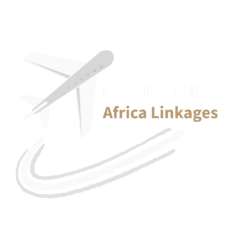The Theater of the Great Migration & Big Cat Kingdom
Maasai Mara National Reserve is Kenya’s most famous and visited wildlife reserve, world-renowned for its extraordinary density of wildlife, breathtaking landscapes, and the annual Great Wildebeest Migration. Located in the southwest of Kenya, the Maasai Mara borders Tanzania’s Serengeti National Park, forming a seamless ecosystem teeming with wildlife and natural wonders.
Location and Size
-
Situated in Narok County, about 270 km (170 miles) from Nairobi
-
Covers approximately 1,510 km² (583 sq miles)
-
Part of the greater Mara-Serengeti ecosystem
The reserve is named after the Maasai people, the semi-nomadic tribe who have inhabited the region for centuries, and the Mara River, which cuts through the park and plays a central role in the migration.
Wildlife & Biodiversity
Maasai Mara is one of the best places in Africa for spotting the Big Five (Lion, Elephant, Buffalo, Leopard, Rhino), but it is especially famous for its large carnivore populations and frequent predator-prey interactions.
Wildlife highlights include:
-
Big Cats: Massive prides of lions, elusive leopards, and fast-moving cheetahs
-
The Great Migration: Over 1.5 million wildebeest, 200,000 zebras, and gazelles cross from Tanzania into Kenya (July–October)
-
Elephants, Hippos, Crocodiles, Hyenas, Jackals, Giraffes
-
Over 470 bird species, including vultures, secretary birds, crowned cranes, and ostriches
Top Safari Experiences in Maasai Mara
1. The Great Wildebeest Migration
-
Occurs July–October
-
Spectacular Mara River crossings where wildebeest face crocodiles and predators
-
One of the Seven Natural Wonders of Africa
2. Big Cat Encounters
-
Year-round sightings of lions, cheetahs, and leopards
-
Best place for big cat photography and documentaries (e.g., BBC’s Big Cat Diary)
3. Hot Air Balloon Safari
-
Drift over the plains at sunrise for panoramic views of wildlife and the river
-
Ends with a champagne bush breakfast
4. Cultural Visits to Maasai Villages
-
Learn about the traditional lifestyle, customs, and dances of the Maasai people
-
Support community-based tourism and conservation education
5. Game Drives (Day & Night)
-
Early morning and evening game drives in open-roofed 4x4s
-
Private and shared vehicle options available
-
Night game drives allowed in nearby conservancies
Main Areas of the Mara
The Mara Triangle (West)
-
Managed by the Mara Conservancy
-
Less crowded, spectacular river crossings
-
High density of big cats and wildebeest herds
Eastern Maasai Mara
-
Most accessible from Nairobi
-
Great accommodation range and classic savannah views
Private Conservancies
-
Include Olare Motorogi, Naboisho, Ol Kinyei, Lemek, and others
-
Offer exclusive game viewing, walking safaris, and night drives
-
Support community conservation and offer luxury, low-impact tourism
Accommodation Options
Maasai Mara offers lodging options for all budgets and travel styles:
-
Luxury Lodges & Camps:
-
Angama Mara
-
Mara Bushtops
-
&Beyond Kichwa Tembo Camp
-
Governors’ Camp
-
-
Mid-range & Tented Camps:
-
Mara Serena Safari Lodge
-
Fig Tree Camp
-
Basecamp Explorer Mara
-
-
Budget & Adventure Options:
-
Enchoro Wildlife Camp
-
Manyatta Camp
-
Public campsites near Sekenani Gate
-
Best Time to Visit
-
July to October: Best for the Great Migration
-
December to March: Warm and dry – good general wildlife viewing
-
April to June: Low season with fewer tourists and lush scenery
Wildlife is abundant year-round, making the Mara ideal for all seasons.
Getting There
-
By Air:
-
Daily flights from Nairobi Wilson Airport to airstrips like Keekorok, Ol Kiombo, or Mara Serena
-
Flight time: ~45 minutes
-
-
By Road:
-
5–6 hour drive from Nairobi on tarmac and gravel roads
-
Can be combined with Lake Nakuru or Lake Naivasha on the way
-
